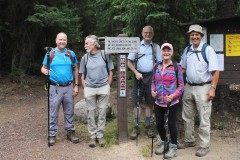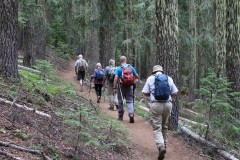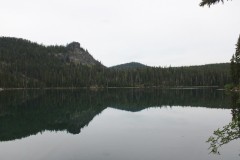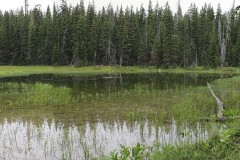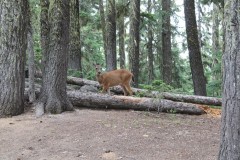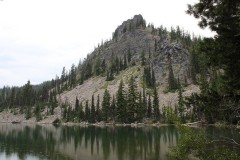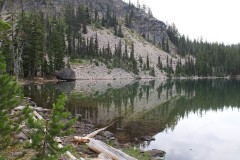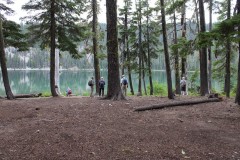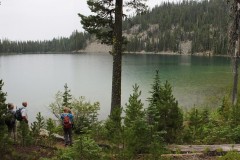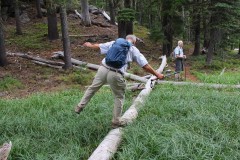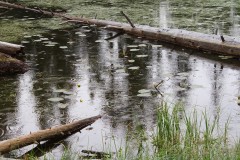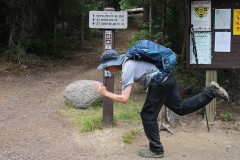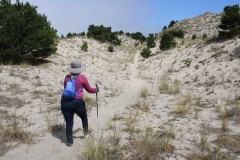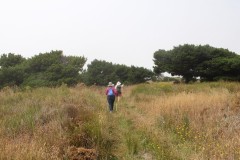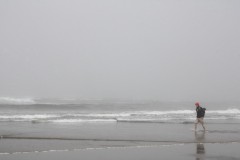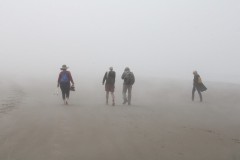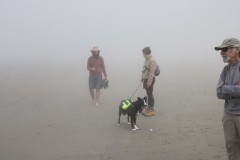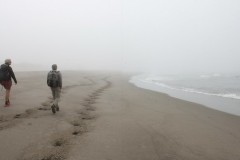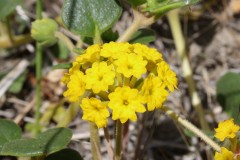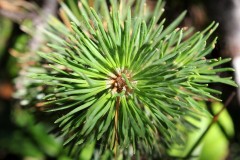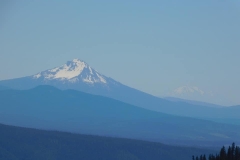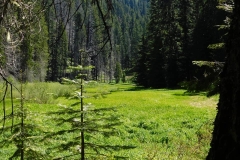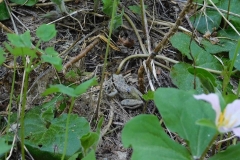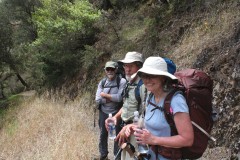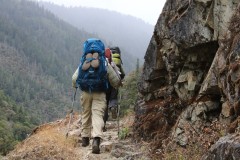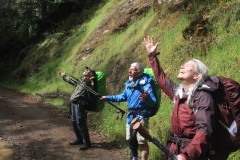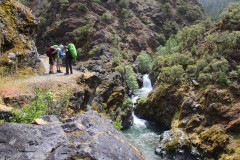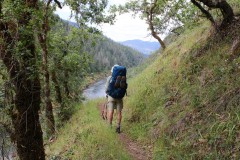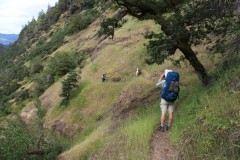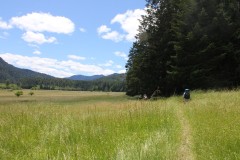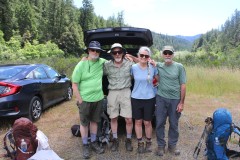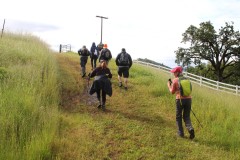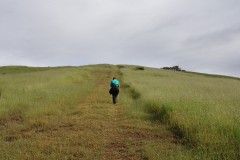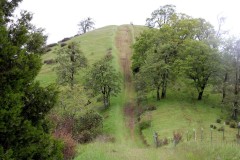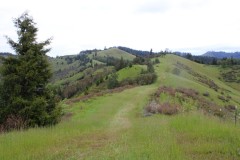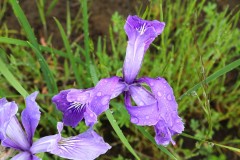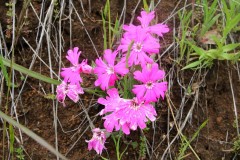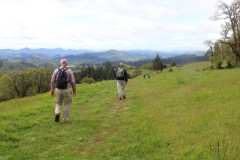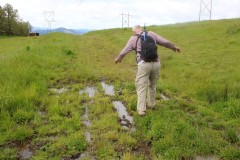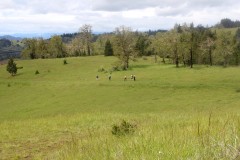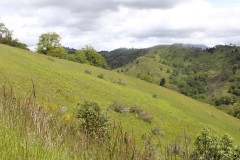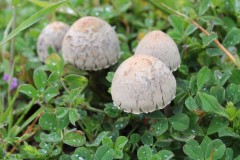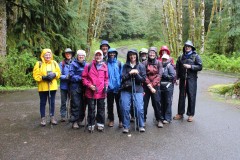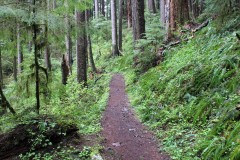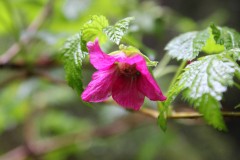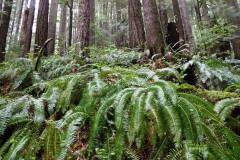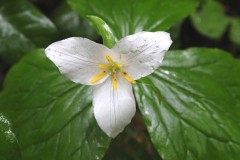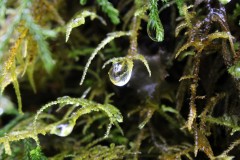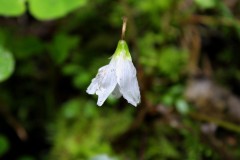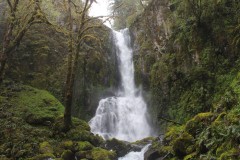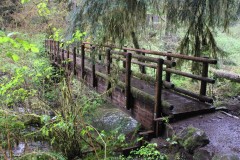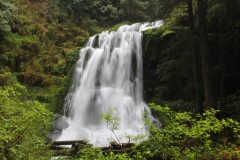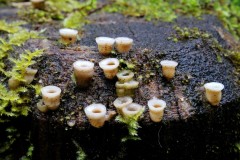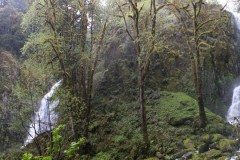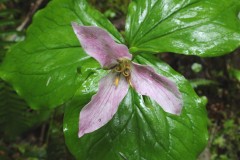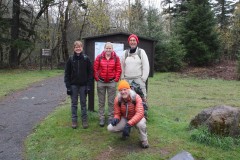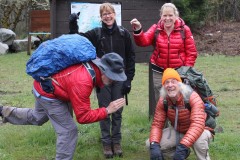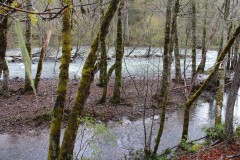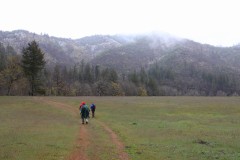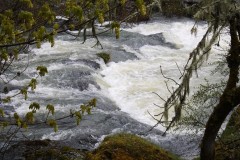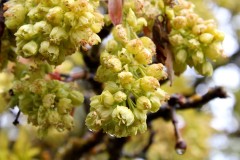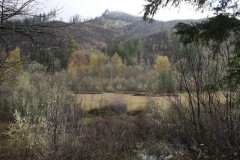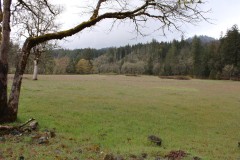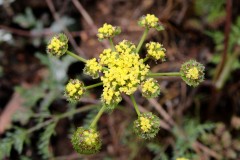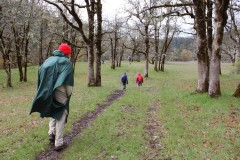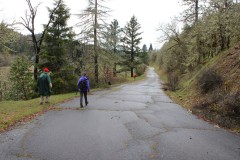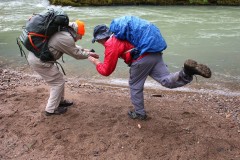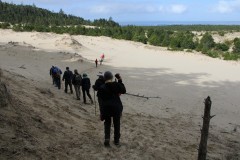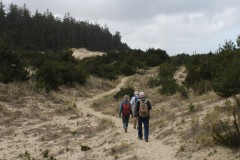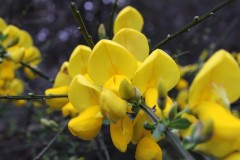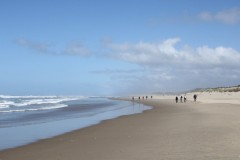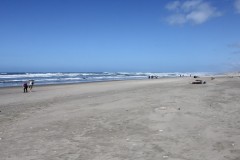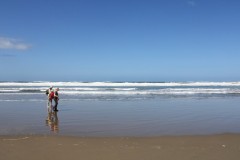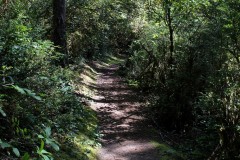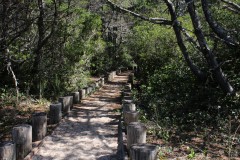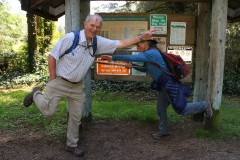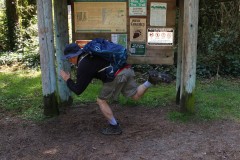Narration by Richard O’Neill
Our original plan was to camp at Waldo Lake for the annual club campout and explore some of the many trails in the Waldo Lake Wilderness. However, the campground was sold out and then the Cedar Creek Fire closed the Waldo Lake Wilderness. Sheesh, what’s the point of making plans, anyway?
We relocated to nearby Odell Lake and because of fire-related closures, we didn’t have a lot of choices about where to hike, so we settled on nearby Rosary Lakes as the destination du jour. The trail was only about 10 miles from the fire, which was 0% contained, yet the air was surprisingly smoke free.
The sky was overcast and light rain fell off and on for the entire day. However, it was also fairly warm and none of the six hikers on this outing felt the need to put on any extra clothing or rain gear during the entire day’s venture.
The Pacific Crest Trail climbed steadily for several miles through a forest comprised of trees covered in moss like my arms are covered with hair. The Rosary Lakes number three, each lake huddled at the base of imposing and craggy Pulpit Rock.
At the Lower Rosary Lake, the first lake we ran into, a deer came to visit with us, totally habituated to the presence of human beings in their forest haunts. Edwin spotted a small lake off trail and before you knew it we were all following him down to the unnamed lake. No complaining though, the lake was pretty cool and made a nice diversion from the more familiar Pacific Crest Trail.
Next stop was Middle Rosary Lake, which had the best view of Pulpit Rock standing against the gray sky. Raindrops pattered on the lake’s surface as the ripples spread out and ran into each other in unrestrained chaos.
Upper Rosary Lake was perhaps the smallest of the three lakes and just for fun, we walked on a use path that circumnavigated the lake and the walk was part hike, part bushwhack as the trail went sketchy on the far side of the lake. But it was hard to get lost as all we had to do was keep the lake on the right-hand side and at some point, we’d return back to the Pacific Crest Trail, which is exactly what happened.
Seems like Edwin was feeling adventurous and when he saw a small lake on Lane’s GPS screen, next thing you know, we were again following him off-trail to another small lake near Middle Rosary Lake. After exploring the large rock pile formed courtesy of Pulpit Rock, we followed a path along the nameless lake which soon petered out altogether. Next thing you know, we were following Edwin downhill through the forest and brush down to Lower Rosary Lake, and then to the Pacific Crest Trail again.
After consulting the map, Edwin and Terry decided to go cross-country down Rosary Creek and then cross Highway 58 to reach our campsite. The rest of us decided to partake in the safety and comfort of a well-established trail that we all knew where it went. I’m both happy and sad to report Edwin and Terry beat us back to the campground.
Read more about this hike on Richard O’Neil’s blog, Richard Hikes
More pictures on Richard O’Neill’s Flickr page
Pictures below by Richard O’Neill


